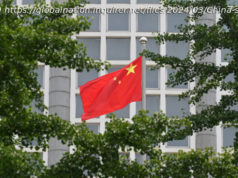Prominent figures and others who are less well-known have all played roles
Behind China’s much-touted “Belt and Road Initiative” are many prominent and other less well-known names and faces. The government is hosting an international summit in Beijing later this month to discuss the global trade development strategy. Here are some of the key figures behind the initiative. Xi Jinping is the driving force behind the scheme, which was his brainchild. Xi first spoke publicly about the strategy in 2013 while visiting nations in Central and Southeast Asia. He championed the initiative to increase global economic connectivity through a “New Silk Road” and maritime belt. Xi expects the ambitious project to allow trade volume between China and “Belt and Road” countries taking part in the initiative to reach US$2.5 trillion in about a decade. Jin is a key player in the “Belt and Road Initiative”. With deep pockets and US$100 billion in initial registered capital, the development bank issued over US$1.7 billion in loans last year for major projects. The lender was launched in October 2014 partly as a counterweight to US-led banking institutions such as the World Bank. Jin has said the “Belt and Road Initiative” is not just focused on economics, but is more a “strategic, geopolitical issue” to help achieve peace and prosperity. Jin has extensive experience in global banking. He has previously served as the chairman of the China International Capital Corporation, vice-president of the Asian Development Bank and vice-minister of finance in China. He became president of the AIIB in January last year. As chairwoman of the US$40 billion Silk Road Fund, which will help finance infrastructure projects for the “Belt and Road Initiative”, Jin is a crucial figure. While the initiative’s projects are aimed at boosting trade and investment, they rely heavily on the support of the fund, which was officially launched in January 2015. Jin has previously said the fund was a for-profit entity, so projects it backs need to be commercially sustainable, allowing the fund to “exit them once they come to market”. She has advocated that the fund support economic development in countries involved in the initiative. The fund should also bolster industrial cooperation between China and other nations and seek to invest in projects that are environmentally friendly, she said. The fund’s first scheme was a US$125 million investment in a Chinese company developing an energy project in Pakistan. Before heading the fund, Jin spent decades at the People’s Bank of China, serving most recently as the bank’s assistant governor. Wang Yi has been instrumental in selling the “Belt and Road Initiative” as a way of increasing international economic cooperation. Wang, who has served as foreign minister since March 2013, has been the ambassador for the initiative around the globe, visiting countries along the intended “New Silk Road” to highlight the programme’s benefits. He has so far focused on how the initiative has increased trade investment, accelerated production capacity, kick-started an international infrastructure network and helped cultural exchanges. He has emphasised that the initiative does not translate into any form of political intervention by China in other nations, saying it is not a “tool of geopolitics”. This led to the renaming of the scheme from “One Belt, One Road” to the “Belt and Road Initiative” to avoid suggestions that the focus of the strategy was China alone. Xu Shanda first laid the groundwork for the initiative in 2009 in his role at the tax department when he proposed a “Chinese Marshall Plan”, mirroring the US aid programme to help rebuild Europe after the second world war. Xu’s proposal recommended China use its large foreign reserves to invest in developing countries’ infrastructure, including railways, highways and energy projects. The “Belt and Road Initiative” follows in the footsteps of this initial proposal, with Chinese funding and investment in infrastructure projects across dozens of countries. Gao was heavily involved in the roll-out of the “Belt and Road Initiative”. He was succeeded as commerce minister earlier this year by Zhong Shan, a former vice-governor of Zhejiang province. Gao said the initiative provides advantages for both China and participating countries, injecting “fresh vitality into pan-Asia and Eurasia regional cooperation”. As a channel for China to open itself up to the global economy, Gao linked Chinese foreign investment to improved economic cooperation with other nations. He also said the initiative would help stabilise the scale and speed of foreign investment into China, creating jobs and business in the mainland economy. Seen as Xi’s right-hand man on finance, Liu is key to driving the success of the “Belt and Road Initiative”. Liu, 65, is also the vice-chairman of the National Development and Reform Commission, a central planning agency with sweeping control over the Chinese economy. Liu is a member of the president’s inner circle and his voice will be significant in influencing the implementation of the “Belt and Road Initiative”. As someone who is viewed by analysts as taking a more global view of China’s economy, Liu will be influential in helping the programme increase China’s role in the global financial system. Xiao was only appointed last year, but will take a key role in the initiative. Xiao hails from Liaoning province and previously served as the director of the State Administration of Taxation, as well as serving under Premier Li Keqiang. He has recently signalled flexibility on China’s debt levels, indicating the country is likely to increase government spending to further the economy’s furious growth, feeding into the needs of the “New Silk Road” programme.






